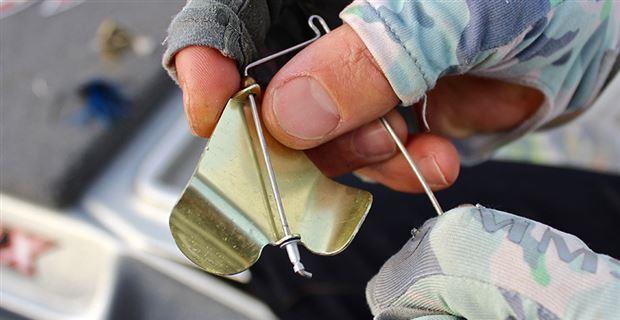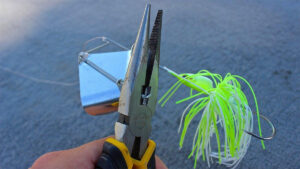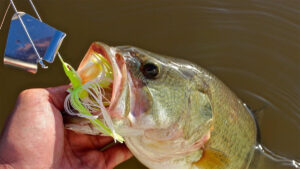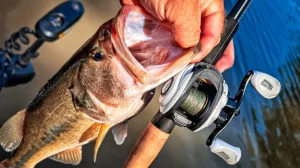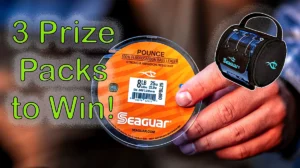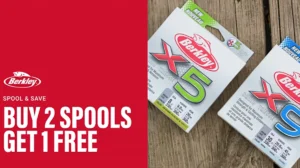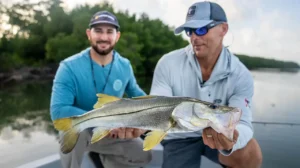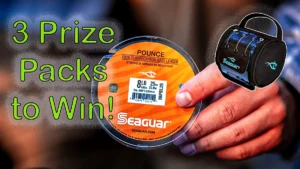It’s buzzbait season; the cooler temperatures and shad-gorging bass associated with the fall have arrived throughout most of the country.
Elite Series pro James Elam is well trained in the art of buzzbait fishing. For Elam, it’s not as easy as tying on a buzzer right from the package and casting—there are a few modifications he makes to get a better sound, or squeak, from his buzzbaits that help him get more bites.
Crimp the rivet
Nowadays most buzzbaits will catch fish without much tinkering, but Elam believes these refinements can lead to few more bites throughout a day on the water. Whether Elam is using one of his dad’s homemade buzzbaits or the new Jackall Firecracker Buzzbait, he makes these adjustments to get the most out of his baits.
“When I take a buzzbait out of the package, the rivet is the first thing I look at,” Elam said. “I’ll take a pair of crimpers or pliers and crimp the rivet down on the wire so it can’t move. I want the rivet completely stationary. I’ll then make sure I am getting 100 percent metal-to-metal contact between the blade and the rivet. This alone creates a louder noise that sounds more like a squeak.”
The angle of the blade coming into contact with the rivet is another component Elam pays special attention to. He bends the part of the blade that comes into contact with the rivet to ensure it’s a flush fit. This guarantees the blade and rivet will be in constant contact on every cast and retrieve.
If Elam is using a buzzbait with a black or golden blade, he adds another step to the process.
“Painted buzzbait blades require a little more work,” Elam said. “The powder coat of the paint will dull that metal-to-metal contact and quiet your buzzbait. So before crimping the rivet I’ll actually take the blade off and use sandpaper to knock all the paint off where the blade meets the rivet.”
Give your buzzer some breeze
Elam is a strong believer that a buzzbait blade needs to be spun an ample amount before it reaches its true sound potential. After breaking in a buzzbait by spinning the blade it not only sounds better to Elam, but also to the bass.
“I hang my buzzbaits out of my truck window,” Elam said. “If I know the buzzbait bite is on I’ll hang a few of them out of the window on my way to the lake. You can over-wear the blade, so I only do this for 5 or 10 miles. You can blow on your blade before you hang it out the window, and then after, and you’ll hear the squeak. It’s significantly better.”
The revolutions of the blade turning against the rivet bring out a louder sound that Elam feels entices more bites from finicky bass. There is certainly an audible difference between a buzzbait Elam has broken in on the highway and one tied on from the package.
“Believe it or not I am religious about doing this,” Elam said. “I get a lot of weird looks when I’m driving down the road with a buzzbait out of my truck window; but it really helps. ”
Paying attention to the small details has helped Elam separate himself from other anglers on the water when the buzzbait bite is on. Following these simple steps will help you get a more pronounced and unique sound from your buzzbait.


